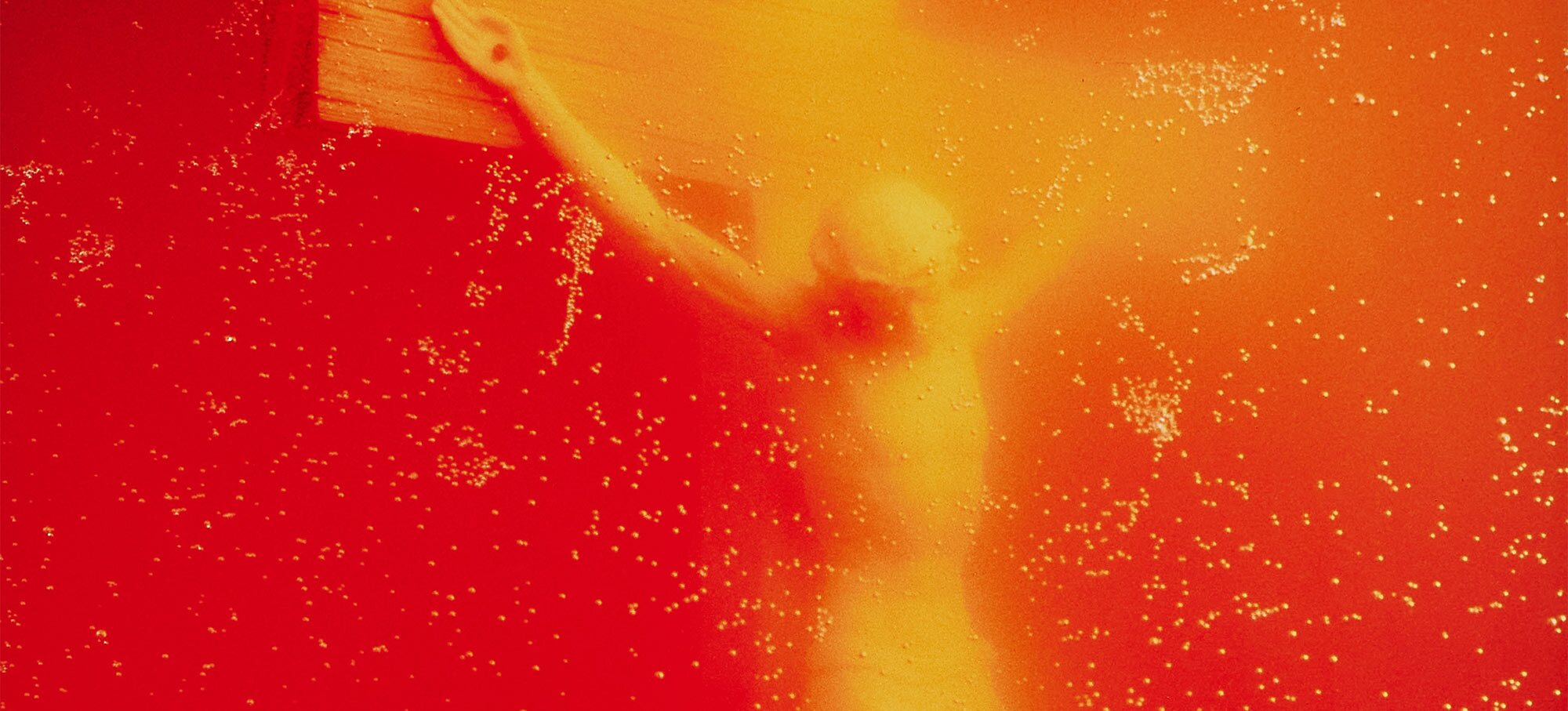
Andres Serrano was catapulted into the public's consciousness on May 18th, 1989, when '... Sen. Alphonse D'Amato tore up a picture of the artist's Piss Christ on the floor of the U.S. Senate. The act launched the so called Culture Wars, a national debate over free expression and federal funding of the arts" (Brian Wallis, Ed., Andres Serrano: Body and Soul, New York 1995, inside cover text). At the time, the work was being included in a traveling exhibition which began at The Los Angeles County Museum of Art, Los Angeles and The Miller Institute for Contemporary Art, Pittsburgh before heading to the Virginia Museum of Fine Arts, Richmond. It was in the third location where Methodist Minister Reverend Wildmon began protesting against Serrano's inclusion in the show. The present work is part of an edition of four, of which only three now exist, given that one was damaged beyond repair whilst on exhibition. Piss Christ is widely considered to be the masterwork by Serrano which made him both famous and infamous.
The present works reveals Serrano's abilities to evoke subversive social connotations through the power and simplicity of the photographic image. Here, a crucifix floats in a mysterious otherworldly ether and is abstracted by a dynamic array of strange bubbles: a fleeting constellation that adds movement and energy to the static crucifix, yet disrupts its homogeneity. One questions whether Serrano's figure really does float in urine, or whether this work is the product of his playful trickery. In this sense, he questions not only the reality and representation of photography, but also of language. The title of this work adds to the photograph's already rich and allusive poetry. Aside from the conceptual content of his photograph, the viewer is presented with a luscious surface. The deep red and amber colours, combined with the fizzing bubbles across the image, make this photograph dazzle before the eyes.

Museum Brandhorst, Munich
Image: © Scala, Florence/bpk, Bildagentur fuer Kunst, Kultur und Geschichte, Berlin
Artwork: © 2022 The Andy Warhol Foundation for the Visual Arts, Inc./Licensed by DACS, London
Piss Christ belongs to a series of photographs showing various religious statuettes immersed in different bodily fluids, including blood, milk, urine, and semen. Serrano's use of urine is reminiscent of Andy Warhol's Oxidation Paintings, also known as the "Piss Paintings" where the artist used his urine to create abstract compositions on copper-plated canvases. Each of Serrano's compositions were printed on a grand scale; the miniatures enlarged to provoke a sense of grandeur and echo the proportions of ecclesiastical imagery. Serrano, a practicing Catholic, has repeatedly emphasised in interviews that his intentions for Piss Christ were never to incite controversy, but to create an act of devotion, following his teachings that it was wrong to idolise representations of Christ. Undeniably playful, Piss Christ and Serrano’s legacy paved the way for many contemporary artists, among them Chris Ofili, who created a scandalous uproar when he exhibited the Holy Virgin Mary (1996) with elephant dung in The Brooklyn Museum of Art's 1999 Sensation exhibition. By confronting institutional societal values of decency and moral standards, Serrano stands for artistic conviction and freedom of expression, embodying a critical moment in art history that powerfully investigates the conflict between institutional orthodox conformity and objective freedom of expression.